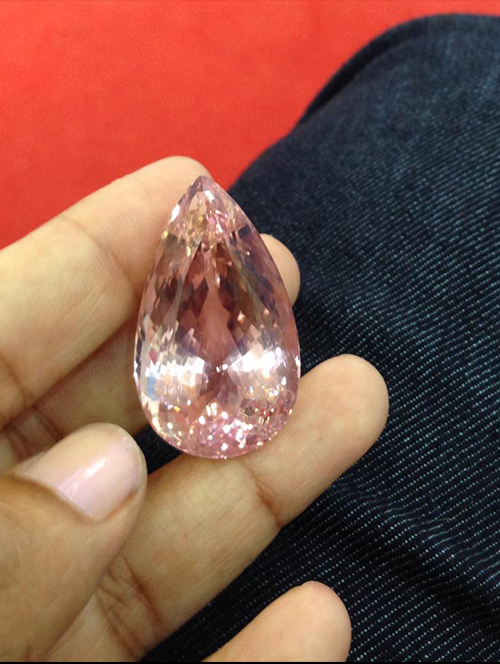9 tips when buying Gems
If you're not careful...you can end up with a stone that's worthless!
In general you should know what you want and how much you want to spend. It’s easy to get carried away when seeing all the beautiful gems. When we buy semi-precious gems, we buy what we fall in love with but when it comes to precious gems like sapphires, emeralds, rubies and diamonds our customer’s budget is crucial.
- Natural or Synthetic: always ask! A natural gem is found in the natural environment whereas a synthetic stone, is a stone with the same chemical composition as the natural one but made by man in the lab. Especially, down south jewellery pieces may seem cheap but up to 80% use glass stones. So if it’s to be too good to be true it probably is.
- Colour: pale coloured gems are normally cheaper than the deeper coloured stones. A common trick played in Sri Lanka is that pink sapphires are sold as rubies. Rubies are always red and never pink. Also there is a big price difference between the two. Pink sapphires and rubies are the same stone - it is the colour that gives the stone its name.
- Inclusions: a stone with many inclusions is normally cheaper. The best example is Emerald. An emerald with many inclusions is much cheaper than an inclusion free Emerald. Also gems with many inclusions are paler in colour and structure of the stone is brittle so you need to be careful when wearing.
- Difference between treated and untreated. Treatments vary from gem to gem. Emeralds are oiled. Rubies are glass filled. Sappires are heated. Here again it depends on the budget and requirement. As a rule, treated gems are cheaper than untreated gems. For example: paler blue sapphires, called geuda, are heated in a furnace to enhance colour. The geuda heat treatment takes a day or two whereas Mother Nature would take millions of years for the same process. For astrological reasons it is recommended to use untreated gems.
- Cut: often when buying gems prices are quoted in carats. So the cut is of fundamental importance, especially with precious gems, because Sri Lankan gem dealers like to use the mixed cut, which allow more unnecessary weight per gem than any other cut. Mixed cut allows minimal wastage for the gem dealer. So it’s of great important to look at the gem before buying. The pavilion (bottom cone like part) of the gem shouldn’t be more than 75% of the whole stone. The better the stone is cut, the better the proportions and brilliant the gem will be.
- Size: in general the bigger the stone, the better the colour, the more expensive and valuable it will be. Always look at the cut of the stone. A well cut stone will always be more expensive but in the long run a better investment. Normally the budget commands the gem size. Also one must be realistic with what one can afford, especially when it comes to diamonds.
- American diamonds: this term is a favourite at Sri Lankan jewellery stores. American diamonds are crystals and their real name is Cubic Zirconia. So don’t be fooled just because it has a diamond title. Not everyone can afford diamonds and for some people the stone is not so important. In general, smaller stones look real but the bigger the American diamond the faker it looks so be careful!
- Gem studded jewellery: especially in tourist destinations, hoping that you will never return, hustlers are out to get you. For example a pristine blue sapphire set on a ring might not have the colour you think it has. Often a dark blue coloured foil or a blue marker pen is used to colour the bottom of the stone. You will only know when the stone starts fading in colour or you take the stone out of its casing. Certificates provided might be worthless so be careful.
- Ratnapura: most gems sold are synthetic at the market but it’s a good experience and definitely fun.

 Please wait...
Please wait...

 Please wait...
Please wait...
